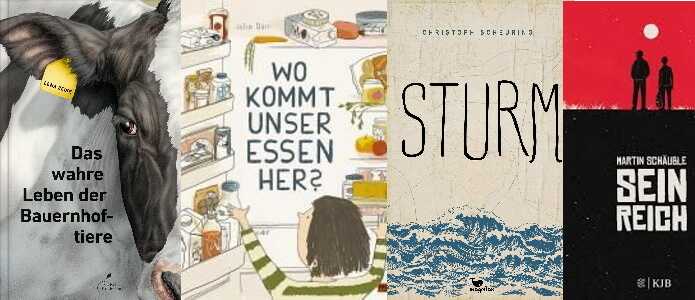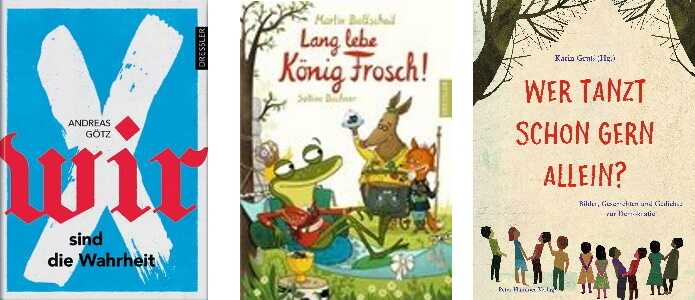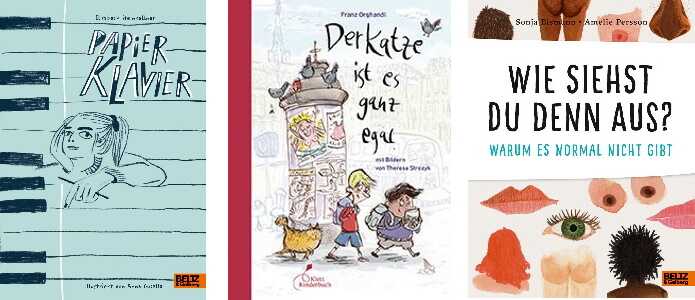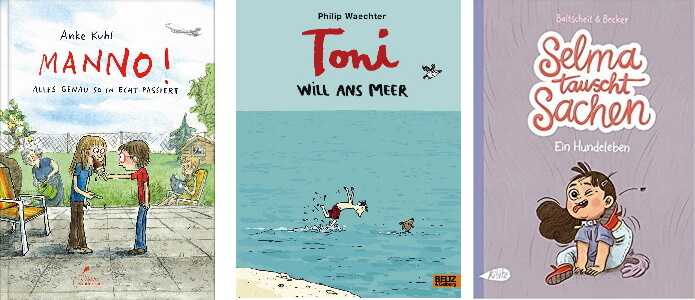Bookworld
Books for Future. Children's and young-adult books that point to a better future

While the Fridays For Future movement itself has been stymied for months this year by the Covid19 crisis and the general ructions of the pandemic, climate change and the environment have become a central topic in the German-language children's and young-adult book market. Authors and publishers have responded with impressive speed to issues that only last year were active and at times polarising topics exclusively on the private, social and political level. As a result, books are now appearing on the market that had previously been tucked away in drawers. One such example is the picture book Die Klimaschweine ('The climate pigs') by Till Penzek and Julia Neuhaus. The book spells out the causes and effects of climate change and proposes possible remedies, all packaged in a colourfully illustrated and amusingly over-the-top story about penguins on one side of the globe and pigs on the other. 'Changing entrenched habits is not an easy task, but every single one of you can make a contribution! Don't let yourself be brushed off!': this is the message at the close of the book, with its final double-page illustration depicting pigs and penguins both young and old all taking part in a Fridays for Future demonstration.

Thus for instance there are two non-fiction picture books that both tackle the issue of livestock farming. In Das wahre Leben der Bauernhoftiere ('The real life of farm animals') Lena Zeise uses photo-like illustrations and brief explanations to give a largely value-free picture of the difference between conventional and eco-friendly farming methods, while Julia Dürr chooses busy double-page spreads to explore the question spelt out in her title: Wo kommt unser Essen her? (‘Where does our food come from?’). Needless to say, with milk, meat and eggs at issue as well as bread, apples and tomatoes, questions about animal husbandry and abattoir methods also come up for discussion, and Julia Dürr accordingly compares the very different production processes used in small enterprises and in large-scale industrial farming. By contrasting different systems with one another, both books encourage their readers to reflect on their own behaviours with respect to food and to consumption in general, and in the process it becomes clear that every single individual can do their bit for the climate, for the environment and for animals.

Whether cheerfully humorous or dourly serious, whether it’s narrative non-fiction, children's novel or a dystopian vision aimed at young adults, stories both realistic and fantastical are just as effective in 2020 as ever they were in encouraging the reader to both project and reflect. Their protagonists, be they literary, fictional or copied from life, serve as exemplars when it comes to questions of solidarity and tolerance, moral and political values, or interaction with nature. It is indeed collisions between radical and seemingly irreconcilable standpoints that authors frequently use as their chief narrative device. In Christoph Scheuring’s young-adult novel Sturm (‘Storm’), for instance, a militant animal-rights activist encounters a fisherman who earns his living by catching fish and accordingly has a completely different attitude to nature and to life and death.

Opposing world views are also contrasted with one another in relation to topics such as dictatorship, fake news, radicalisation, racism, populism, conspiracy theories and political shifts to the right. Thus Martin Schäuble has the young protagonist of his novel Sein Reich (‘His Reich’) spend his entire summer in the world of the far-right grouping known as the ‘Reichsbürger’, while Leah in Andreas Götz’s Wir sind die Wahrheit (‘We are the truth’) investigates her own brother’s radicalisation. Both novels highlight the seductive appeal of far-right thinking and the danger it represents for democracy and freedom. Martin Baltscheit’s children’s novel Lang lebe König Frosch (‘Long live King Frog’) similarly illuminates the power and the modalities of targeted disinformation and manipulation, and demonstrates in a tongue-in-cheek sort of way how important it is to question the narratives one is offered, and not automatically believe everything one is told, no matter how alluring or alarming it may sound. Readers are also encouraged to reflect on the value of freedom and democracy by Wer tanzt schon gerne allein? (‘Does anyone like dancing on their own?’), a book for all the family edited by Karin Gruss, that focuses on the importance of mutual respect, tolerance and solidarity through a variety of pictures, poems and stories.

Needless to say, as well as treating all these topical issues the children’s and young-adult book market also offers just as much scope this year as in any other for tales of friendship, family and love, for adventure and excitement, for stories with a historical or biographical bent, for fairy tales and the fantastical. A particularly striking feature here is the ever increasing number of graphic novels and children’s comics, which offer a mix of happy, sad, surprising and exciting reading experiences, and are in some instances targeted specifically at beginners and early readers, thereby bringing fresh impetus to this sector of the market. Eminently readable examples this year include Anke Kuhn’s Manno! (‘Manno!’), a book of childhood reminiscences that both children and adults will find entertaining; Philip Waechter’s holiday adventure Toni will ans Meer (‘Toni wants to go to the seaside’); and Selma tauscht Sachen: Hundeleben (‘Selma does a swap: life as a dog’), by Martin Baltscheit and Anne Becker, which shows how useful open-mindedness and a change in perspective can be when overcoming dangers - even if it’s only about a sweet little poodle.
by Marlene Zöhrer
Dr. Marlene Zöhrer is a research assistant at the University of Munich. She also works as a freelance literary critic and as an editor for children's books.
Translated by John Reddick